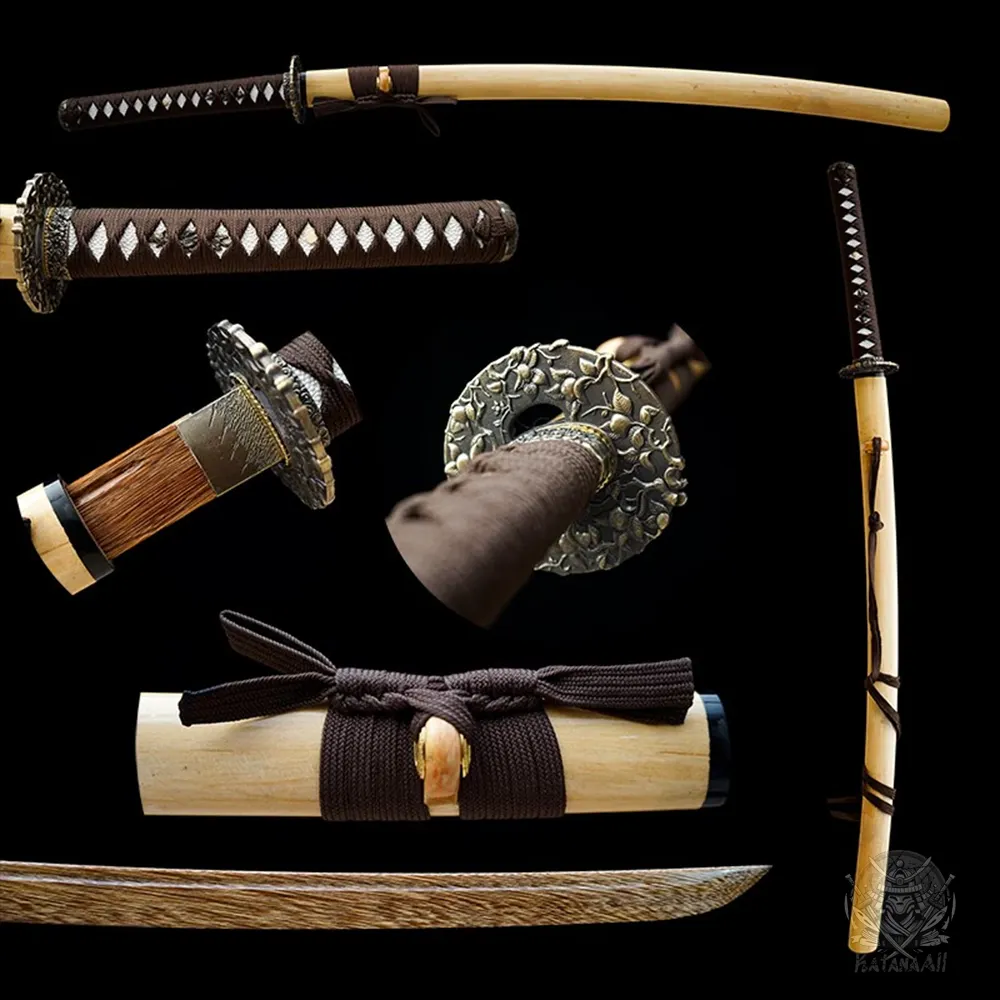
Swords and bladed weapons have been a cornerstone of human history, reflecting the craftsmanship, culture, and martial traditions of civilizations worldwide. Among these, the Japanese katana stands as an iconic symbol of precision and artistry, often compared to blades from other nations such as European longswords, Chinese dao, and Middle Eastern shamshirs. The cultural differences between Japanese swords and those from other countries go beyond mere design and utility—they reflect deeply ingrained philosophies, traditions, and societal values.
Craftsmanship and Design Philosophy
Japanese swords, particularly the katana, are renowned for their intricate forging process and sharp, curved blade. The katana’s construction embodies a blend of beauty and functionality. Traditional smiths use a labor-intensive folding and tempering process to create a blade that is both hard and flexible. This process, known as tamahagane steel forging, results in a blade with a unique grain pattern (hada) and a tempered edge (hamon) that is as much a work of art as a weapon.
In contrast, European swords like the longsword prioritize versatility and brute strength. Typically straight and double-edged, they are designed for both cutting and thrusting in armored combat. European smiths often employed simpler forging techniques, focusing instead on developing weapons suited for mass production during times of war.
Chinese dao and jian blades offer yet another perspective. The dao, a single-edged curved sword, emphasizes sweeping movements and is symbolic of valor. The jian, a straight, double-edged blade, represents precision and is often seen as a weapon of the scholar-warrior. Meanwhile, the Middle Eastern shamshir, with its pronounced curve, reflects a design optimized for mounted combat and slicing motions.
Cultural Significance and Symbolism
The katana is deeply embedded in Japanese culture, representing the soul of the samurai. It is not merely a tool for combat but a symbol of discipline, honor, and spiritual growth. Samurai treated their swords as sacred objects, often performing rituals to bless and honor them. The katana’s design embodies the Japanese aesthetic principle of wabi-sabi, appreciating beauty in simplicity and imperfection.
In Europe, swords were often tied to chivalry and knighthood. They were symbols of status, power, and divine right, often adorned with ornate crossguards and inscriptions. The longsword, in particular, came to represent the knight’s code of honor, paralleling the katana’s role in samurai culture.
The Chinese dao and jian carry rich symbolism as well. The dao represents the physical aspect of combat, while the jian embodies intellectual and spiritual mastery. In Chinese culture, these swords are often associated with Taoist philosophy and the balance between yin and yang.
Middle Eastern swords like the shamshir reflect the warrior ethos of the region, where mounted combat and swift strikes were paramount. These blades are also celebrated in poetry and art, often tied to themes of heroism and divine protection.
Combat Styles and Philosophies
The katana is integral to the martial art of kenjutsu, where fluid, precise movements and one-strike efficiency are emphasized. This reflects the Japanese philosophy of ichi-go ichi-e, or “one opportunity, one encounter,” which teaches practitioners to approach each moment with focus and intent. Techniques often involve quick, decisive strikes aimed at ending combat swiftly.
European swords like the longsword are central to martial systems such as historical European martial arts (HEMA). These systems emphasize adaptability, with techniques including thrusts, cuts, parries, and grapples. The combat philosophy often mirrors the chaotic nature of medieval battlefield engagements.
Chinese dao and jian are used in styles such as wushu and taiji. The dao’s techniques are dynamic and aggressive, while the jian’s focus is on fluidity and precision, reflecting the duality of action and stillness in Chinese martial philosophy.
Middle Eastern shamshirs are designed for rapid, slicing attacks, often used by cavalry. Their combat style emphasizes mobility and speed, traits that were crucial in the arid, open landscapes of the region.
Ritual and Spiritual Connection
The katana is not just a weapon but a spiritual artifact in Japanese culture. Samurai would meditate on their swords, seeing them as extensions of their own soul. Swordsmiths themselves often performed purification rituals, and the process of forging a katana was imbued with spiritual significance.
European swordsmiths also infused their work with religious symbolism. Swords were often blessed by clergy before battle, and inscriptions on blades invoked divine protection. However, the spiritual connection was less personal compared to the Japanese view of the katana.
Chinese swords, particularly the jian, are closely tied to Taoist rituals and practices. They were often used in ceremonies to ward off evil spirits, symbolizing both martial prowess and spiritual guardianship.
Modern Perceptions and Legacy
Today, the katana is revered globally as a masterpiece of engineering and art. It has become a symbol of Japanese culture, featured prominently in media, museums, and martial arts schools. Collectors and practitioners continue to honor the traditions surrounding the katana, preserving its legacy.
European swords, especially longswords, have experienced a revival through HEMA. These swords are celebrated for their historical significance and versatility. Similarly, Chinese dao and jian are integral to modern martial arts demonstrations, and Middle Eastern shamshirs are prized for their beauty and historical value.
Conclusion
The cultural differences between Japanese swords and blades from other nations highlight the unique ways in which civilizations have approached the art of weapon-making. The katana’s elegance and spiritual depth contrast with the versatility and practicality of European swords, the philosophical duality of Chinese blades, and the swift efficiency of Middle Eastern designs. By exploring these differences, we not only appreciate the craftsmanship of these weapons but also gain deeper insight into the cultural values and philosophies they represent.
